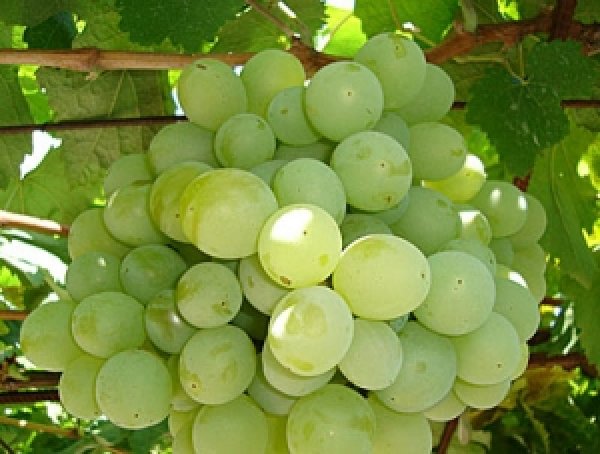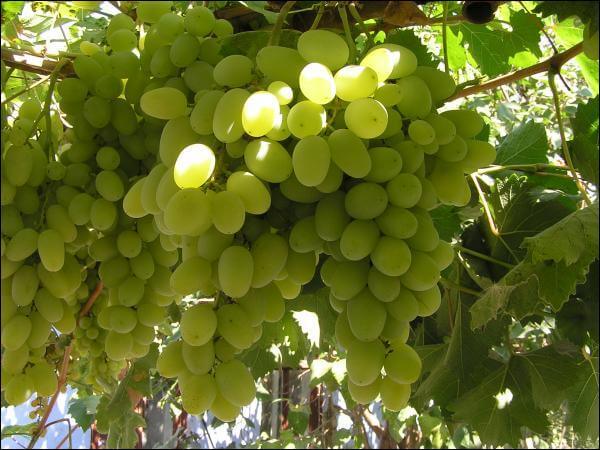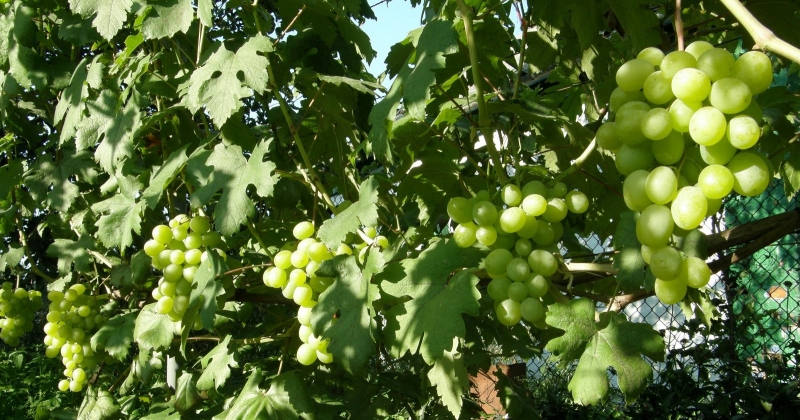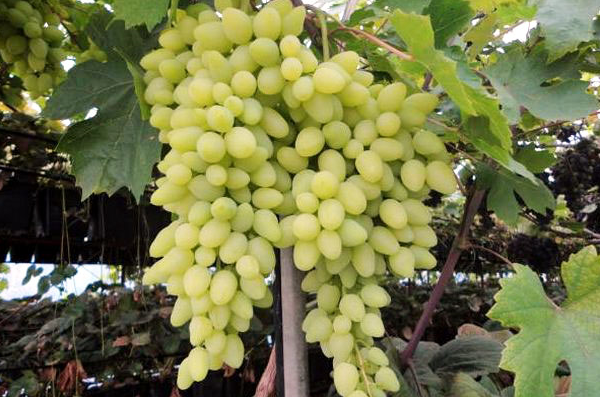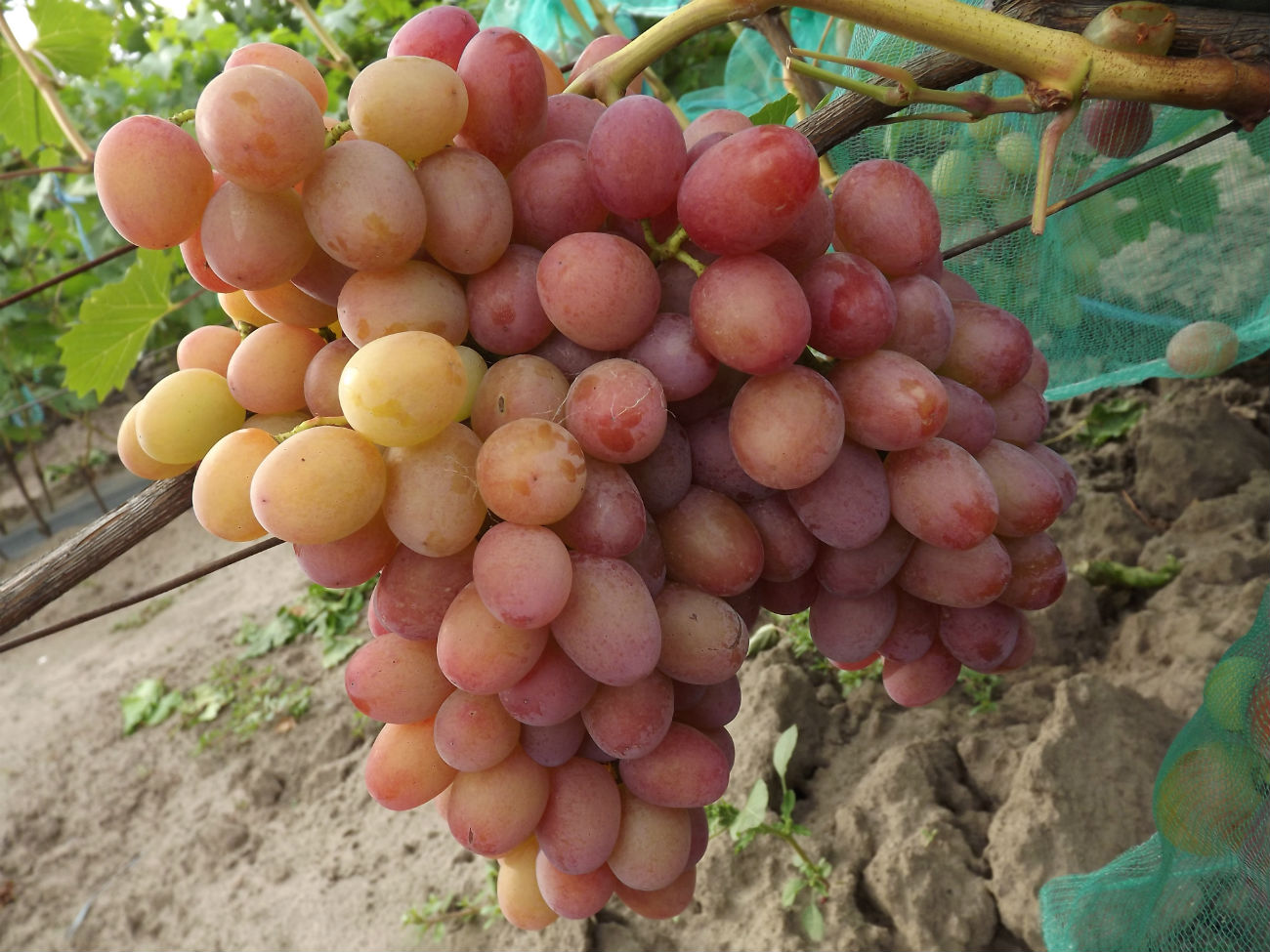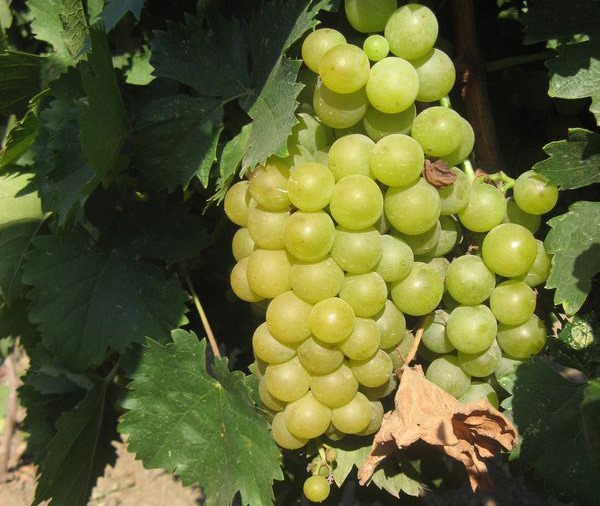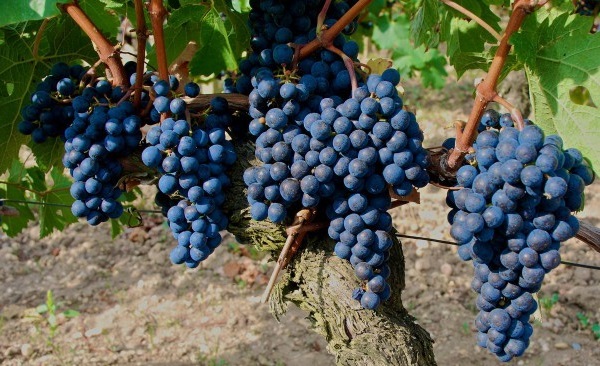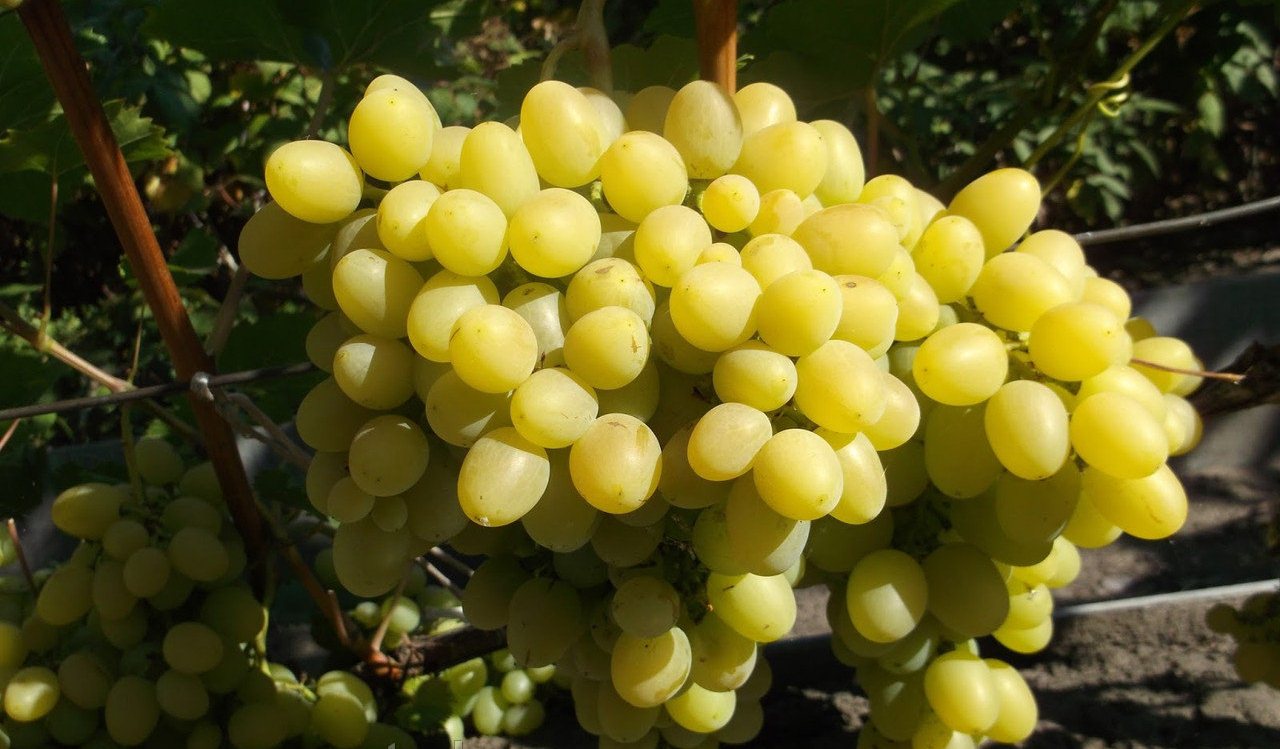Content:
Grapes are considered one of the most ancient cultures. It is grown in almost all regions of the country. With proper agricultural technology, you can get a decent harvest of berries. There are more than 12 thousand grape varieties, one of the most famous is the Talisman grape.
A little about culture
It is rather difficult to say in which country the first vine was planted. It happened about 9 thousand years ago in Syria, from where he got to Egypt and Asia Minor. In Crimea, viticulture began to develop about 2 thousand years ago. Peter I played a significant role in the distribution of grapes in Russia.
Grape juice contains sugar in the form of glucose, which is extremely simple and easily absorbed by the body. Grapes are indicated in the treatment of the first stage of tuberculosis, hypotension, anemia and disorders of the human nervous system.
Grapes can be eaten fresh, and can also be used to make jams, juice and wine.
Description and characteristics of the grape variety Talisman
The talisman (sometimes called the Amulet grape) refers to table varieties with an average ripening period of berries. The ripening period ranges from 125 to 140 days. The fruits are ready for consumption at the beginning of autumn. The bushes begin to bear fruit 2 years after planting.
Only female flowers form on the vine. This means that for their pollination, it is necessary to have a grape variety in the vineyard on which only male flowers develop. The Talisman variety is often used to develop new crop varieties.
Due to its ability to perfectly adapt to new breeding conditions, it is extremely popular in regions with cold climates.
This variety is popular among winegrowers due to the fact that it is able to tolerate low temperatures and prolonged rains well. This does not in any way affect the yield. The Talisman grapes are quite fertile - up to 2 bunches can form on 1 grove, and in some case 3.
The weight of one hand reaches 1.0 - 1.2 kg. The berries are on a medium density grove. They have an oblong shape and a light green tint. When fully ripe, the berries have a nutmeg flavor. They do not crumble from the grove and are stored for a long time.
Despite the fact that the varietal grapes Amulet are able to withstand frosts up to 24 degrees, they need to be covered for the winter.
Among the main advantages of the variety are the following:
- high yield rate;
- great taste of berries;
- early and friendly ripening of the crop;
- good transportability;
- resistance to infection with fungal and viral diseases;
- frost resistance.
If we talk about the disadvantages of the variety, we can name the following:
- development of flowers only of the female type on the bushes;
- the need to remove excess inflorescences.
A small list of shortcomings does not affect the popularity of Talisman grapes among winegrowers.
Features of agricultural technology
Mascot grapes can be propagated by cuttings, branches or seedlings.If seedlings are used for reproduction, the probability of living increases several times compared to other methods.
Planting of this grape variety can be done both in spring and autumn. If planting is carried out in the spring, then the soil for this must be prepared in the fall. The soil must be thoroughly dug up, weeds and plant waste must be removed. It will not be superfluous to fertilize the soil. To do this, you can use humus and organic fertilizers.
It is better to choose a place for a vineyard that is sunny and free of drafts.
When buying grape seedlings, you need to pay attention to its root system. It should be green with no visible external damage. A healthy root is about 10-15 cm long and about 3 mm thick.
Before planting, the seedling needs disinfection of its root. To do this, it is placed for 10 - 15 minutes in a solution prepared from water, clay and hexachlorane. After this time, the roots are well dried and soaked in clean water. The period of soaking ranges from 2 to 3 days.
To plant a seedling, you need to make a hole, the depth and width of which is 1.0 m. A layer of crushed stone, 9-14 cm thick, is poured onto its bottom. It must be well tamped. From the side of the pit, a small diameter plastic pipe is stuck into its bottom. This will ensure good drainage during watering. A layer of black soil is poured onto the layer of crushed stone, the thickness of which ranges from 9 to 14 cm. A ball of rotted manure is laid on top of it, on which fertilizers such as superphosphate, wood ash or potassium can be sprinkled. And on top of them a ball of black soil is laid out. After that, lay all layers again in the same order.
At the end of this procedure, all layers must be well tamped. This is necessary in order to avoid subsidence of the soil in the future, which can injure the root system.
After that, you can already start planting the seedling in the prepared hole. When the seedling is planted, it should be watered well using 2 - 3 buckets of warm water.
Caring for an annual seedling consists in timely watering and loosening the land near the bush.
With the onset of spring at an air temperature of 5 degrees Celsius, the winter shelter can be removed from the bush.
With the onset of summer, you need to tie up the vine. If the bush is still young, it is better to use a cloth or rope for a garter. This will protect young shoots from possible damage.
The garter of the vine has this meaning:
- Provides protection against the development of fungal diseases of grapes.
- Improves airing of bunches.
- It has a positive effect on the quality of berries.
The second time the vine is tied up after it reaches a height of 2.0 - 2.5 m. In this case, you can use wire.
No less important for obtaining a high yield is the procedure for forming a bush through pruning. For this, a secateurs are used. Pruning is performed in compliance with the following recommendations:
- The cut should be smooth. It runs at a 90 degree angle. Thanks to this, it will be possible to speed up the healing process of the cut site.
- First of all, you need to remove damaged and diseased shoots and branches.
- The length of the branch to be left must be at least 6 - 11 buds.
- Shoots that have already borne fruit must be removed with special care, without damaging the bark of the branches located near them. Such branches are cut in such a way that a stump with a length of 0.5 - 1.0 cm remains.
- Young shoots should be left on the bush, the diameter of which ranges from 5 to 10 mm.
In order to minimize the possibility of contracting diseases, preventive spraying of the vine should be carried out every spring.To do this, you can use drugs such as Ridomil, copper sulfate, Tsineb or Fitosporin.
Secondary spraying is carried out no later than 2 - 2.5 weeks before harvesting.
For uniform ripening of fruits, you need to ensure the correct watering regime for the bushes. The first watering is carried out immediately after planting the seedling. Water is introduced not under the root, but into an irrigation groove located at a distance of 30 - 45 cm from the main stem. At the end of the procedure, the groove must be mulched. You can use sawdust, straw or moss for this.
In mid-July, watering can be minimized or stopped altogether. If this rule is not followed, the grapes may crack.
Throughout the growing season, the bushes need feeding through the use of preparations containing potassium and phosphorus. It is recommended to fertilize annual seedlings twice a season: in spring and summer. To do this, you can use nitrophoska or potassium sulfate.
If the vine is already bearing fruit, it needs to be fed 3 times:
- in the middle of spring (with ammonium nitrate solution or organic fertilizers);
- during the formation of the ovary of grapes (nitrogen, potassium or phosphorus);
- in the middle of summer (potassium sulfate, superphosphate).
Each bush must be covered during the winter. Before this, the vine must be removed from the garter, and the shoots must be laid in a trench and sprinkled with earth. Thick stems are wrapped for the winter. To do this, it is recommended to follow these instructions:
- Wrap the stem with a soft cloth.
- Wrap a layer of polyethylene over the fabric, in which to make holes. The ventilation process will be carried out through them. Thanks to this, it will be possible to avoid the possibility of rotting of the upper layer of the bark.
- After that, wind the fabric layer again.
Talisman grapes have a high immunity to infection with diseases such as mildew, iodium and gray rot. But, despite this, it is necessary to timely carry out preventive spraying using fungicides.
Growing unpretentious grapes Talisman is a great opportunity to provide your family with tasty and healthy berries.
